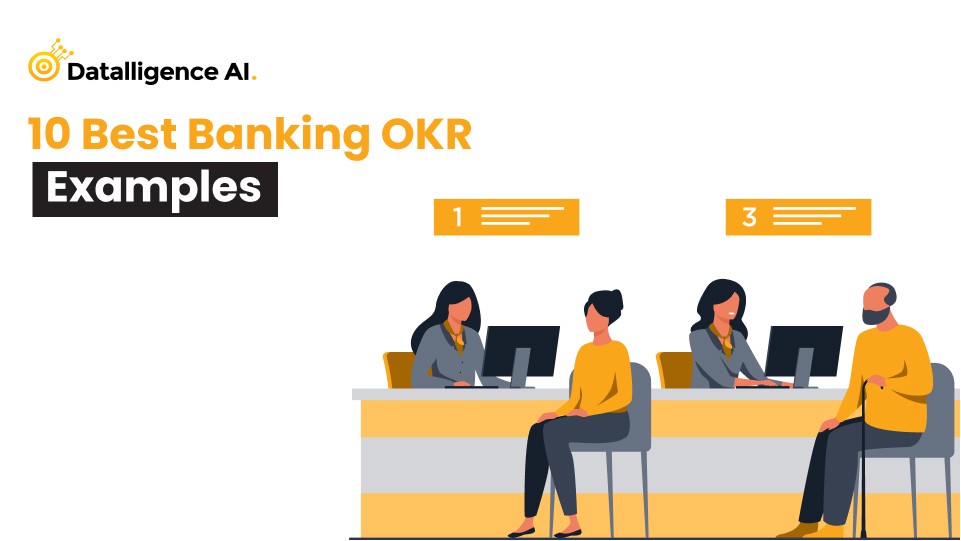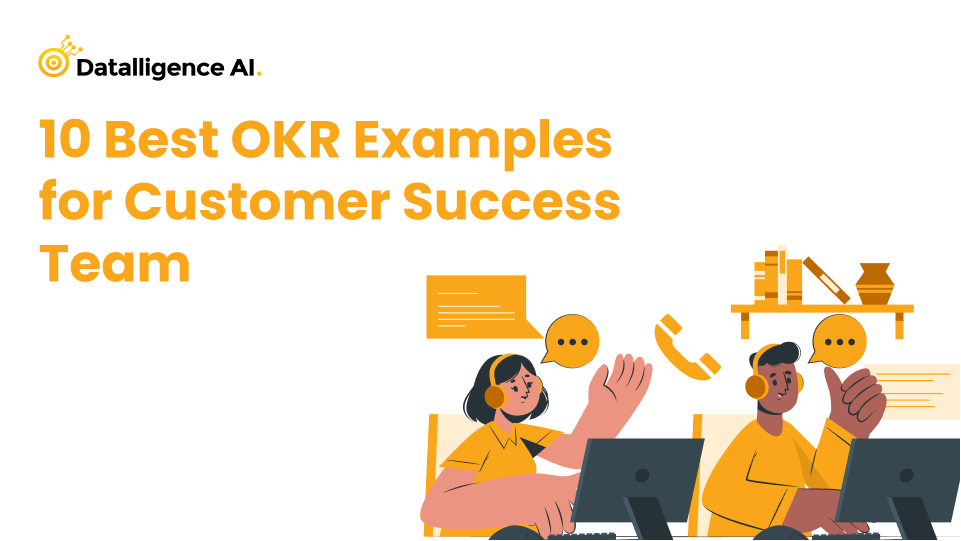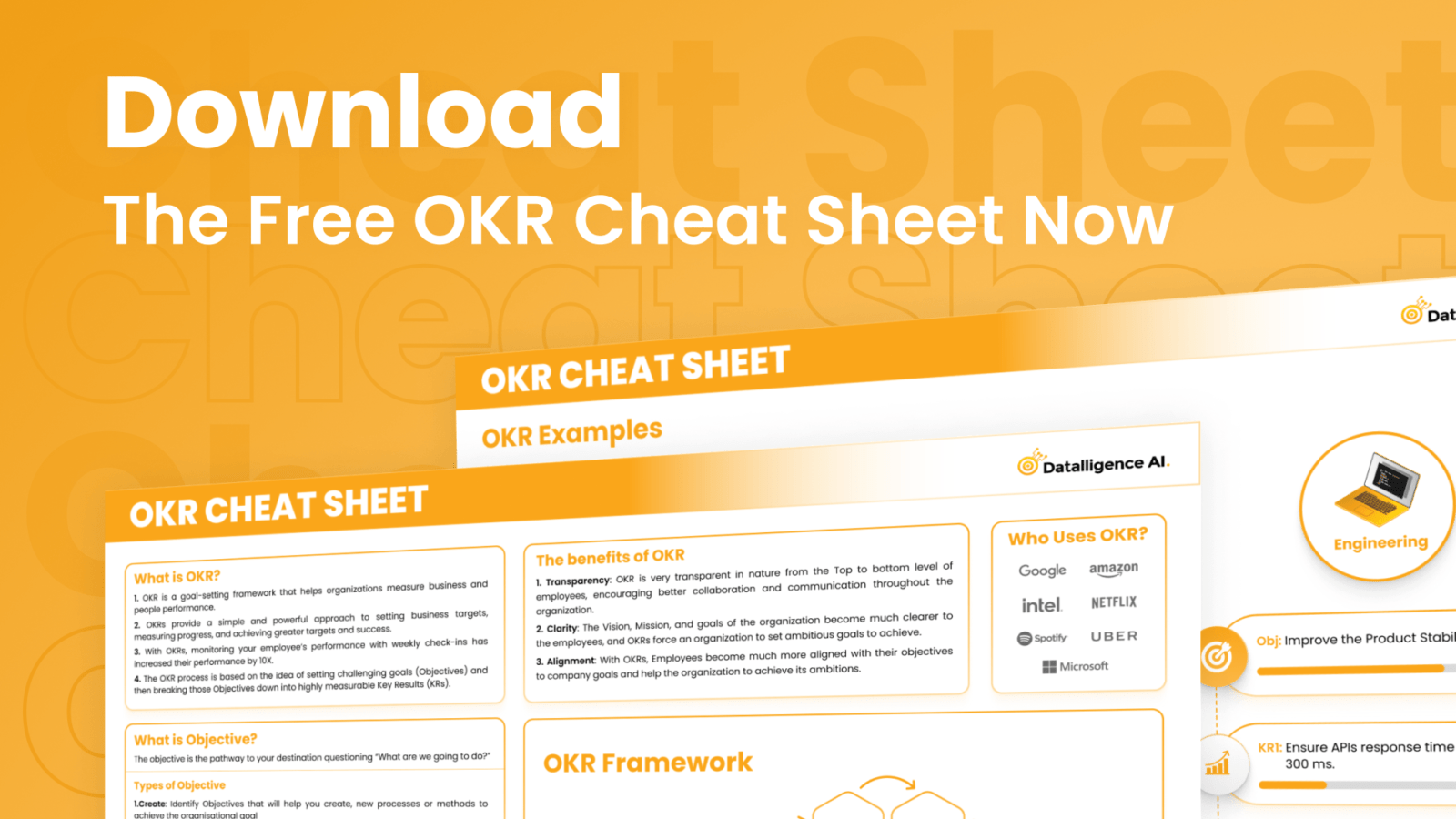Challenges of performance appraisal systems are increasingly coming to light in today’s workplaces. Traditionally viewed as a cornerstone of employee evaluation, these methods often fall short due to several persistent issues. For one, they tend to rely heavily on subjective judgments, which can lead to bias and inconsistent treatment of employees. Furthermore, by placing too much emphasis on quantitative metrics, traditional appraisals risk overlooking vital qualitative factors such as teamwork, creativity, and leadership.
Moreover, as roles continually evolve in the modern workforce, the rigid, one-size-fits-all approach and the infrequency of traditional performance reviews further limit their effectiveness in driving real professional development. Employees may feel disconnected from the review process and miss timely feedback that’s essential for growth.
Modernize performance management
Given these realities, it has become crucial for organizations to modernize performance management. By shifting toward more agile practices—like continuous feedback, collaborative goal setting, and an emphasis on ongoing learning—companies can better align individual goals with organizational objectives. Not only does this human-centered approach foster employee growth and satisfaction, but it also promotes a fairer, more inclusive work environment while helping drive overall business success
Challenges of Performance Appraisals
Traditional performance appraisal systems are fraught with various challenges that can potentially undermine their effectiveness and fairness. Here are some significant problems that these systems often encounter:
1. Subjectivity and Bias in Evaluations
Despite efforts to maintain objectivity, personal biases and perceptions often seep into the evaluation process. Managers, consciously or unconsciously, may be influenced by preconceived notions or interpersonal dynamics, leading to unfair evaluations.
2. One-Size-Fits-All Approach
Conventional appraisal systems often fail to consider individual roles and goals within an organization. This lack of customization undermines the accuracy and relevance of the appraisal, hindering the development of an effective performance management system.
3. Infrequent and Retrospective Feedback
Traditional performance appraisal systems often provide feedback retrospectively, missing the opportunity to guide employees in real-time and inhibit continuous improvement.
4. Impact on Employee Morale and Engagement
The process of performance appraisal can lead to stress and anxiety among employees, affecting their overall well-being, job satisfaction, and productivity within the organization.
5. Overemphasis on Quantitative Metrics
Traditional methods often focus excessively on quantitative metrics, neglecting the qualitative aspects of performance, which can result in a narrow and incomplete evaluation.
6. Inadequacy in Addressing Career Development
Traditional appraisal systems often fail to provide meaningful guidance for an employee’s professional growth and learning.
7. Challenges in Aligning with Organizational Goals
Traditional appraisal systems may face challenges in aligning individual performance appraisals with broader organizational objectives, leading to inefficiencies and misalignment.
Historical Perspective of Performance Reviews
The historical evolution of performance reviews reflects the changing dynamics of workplace management and employee evaluation:
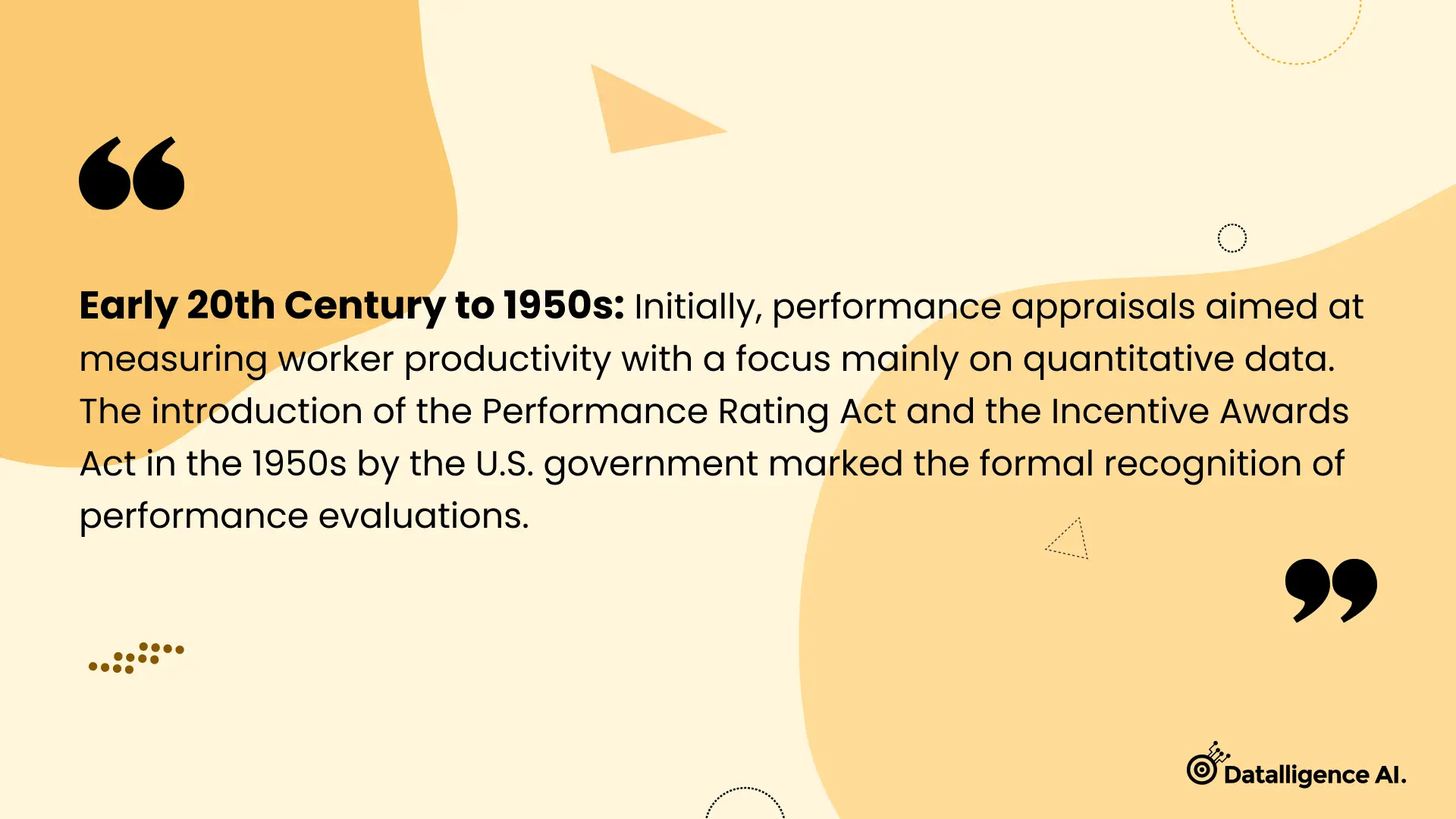
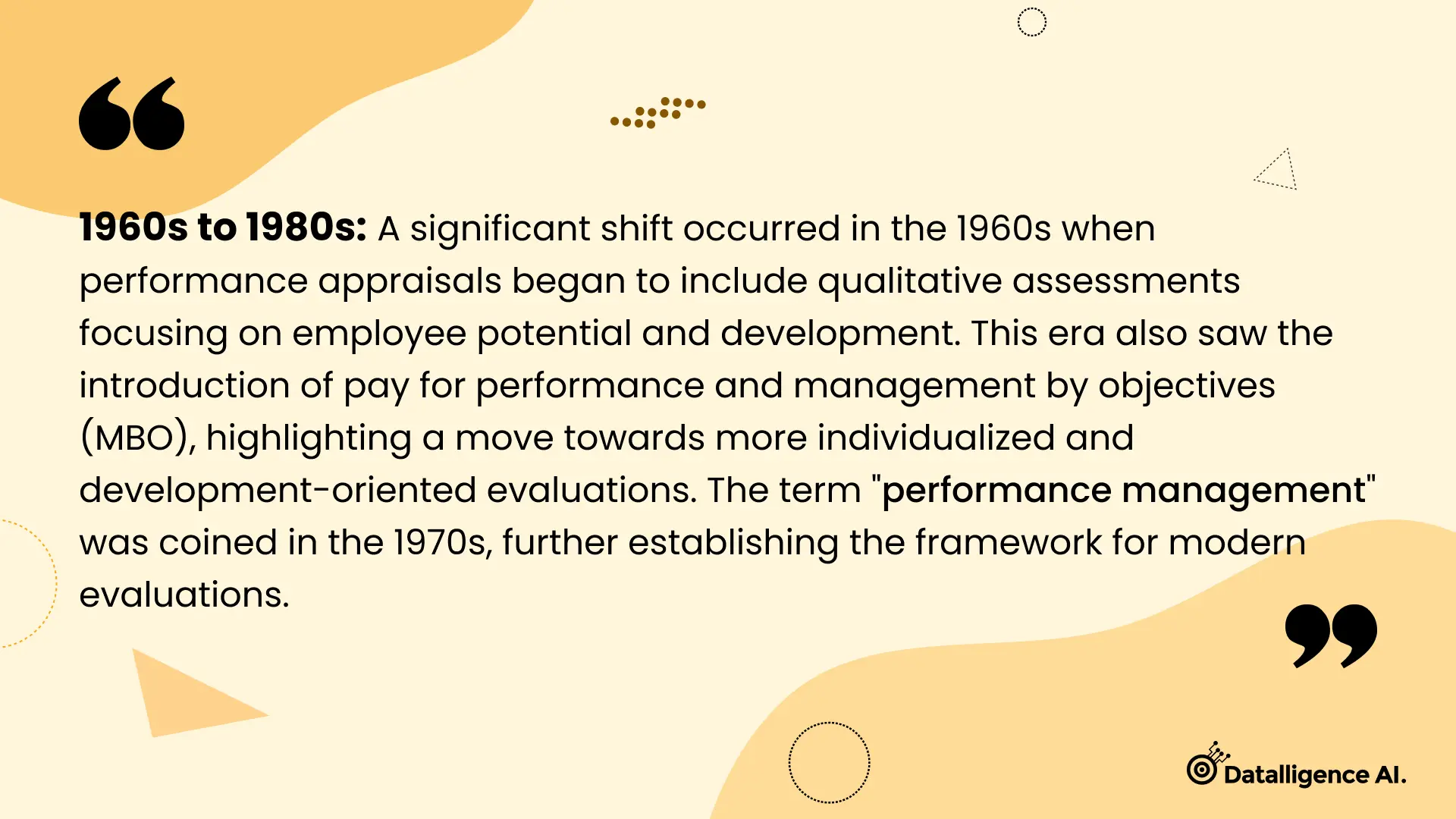

Subjectivity and Bias in Evaluations
Subjectivity and bias in evaluations significantly undermine the fairness and accuracy of traditional performance reviews. Studies reveal that up to 60% of a manager’s performance ratings could be influenced by personal biases, overshadowing the actual strengths and weaknesses of team members
. This subjectivity can lead to:
- Inconsistent Assessments: Traditional appraisal systems often rely on subjective evaluations, leading to potential biases and inconsistent assessments . For instance, the halo effect can occur when an appraiser bases their judgment on one aspect of an employee’s performance, potentially skewing the overall evaluation .
- Impact on Employee Morale: Biased appraisals can damage employee perceptions of their worth and value, leading to disengagement or voluntary termination . Furthermore, 66% of Fortune 1,000 company employees are strongly dissatisfied with their performance evaluations, with 71% perceiving them as unfair .
To combat these issues, solutions include:
- Organizational Network Analysis (ONA): ONA can identify real impact players, reduce bias, enhance internal mobility, and improve managerial oversight . Implementing ONA requires managers to be adept at interpreting and utilizing the insights it provides .
- Unconscious Bias Training: Providing unconscious bias training to managers and using formal prompts that encourage objectivity on appraisal forms can help mitigate bias .
- Clear Evaluation Criteria: Using objective, specific, and clear evaluation criteria and clearly communicating performance criteria and setting development goals at the beginning of the performance period are critical for fair appraisals

Common Performance Appraisal Challenges
Common challenges in performance appraisals often stem from systemic issues within traditional review processes. Addressing these challenges requires a nuanced understanding and strategic adjustments:
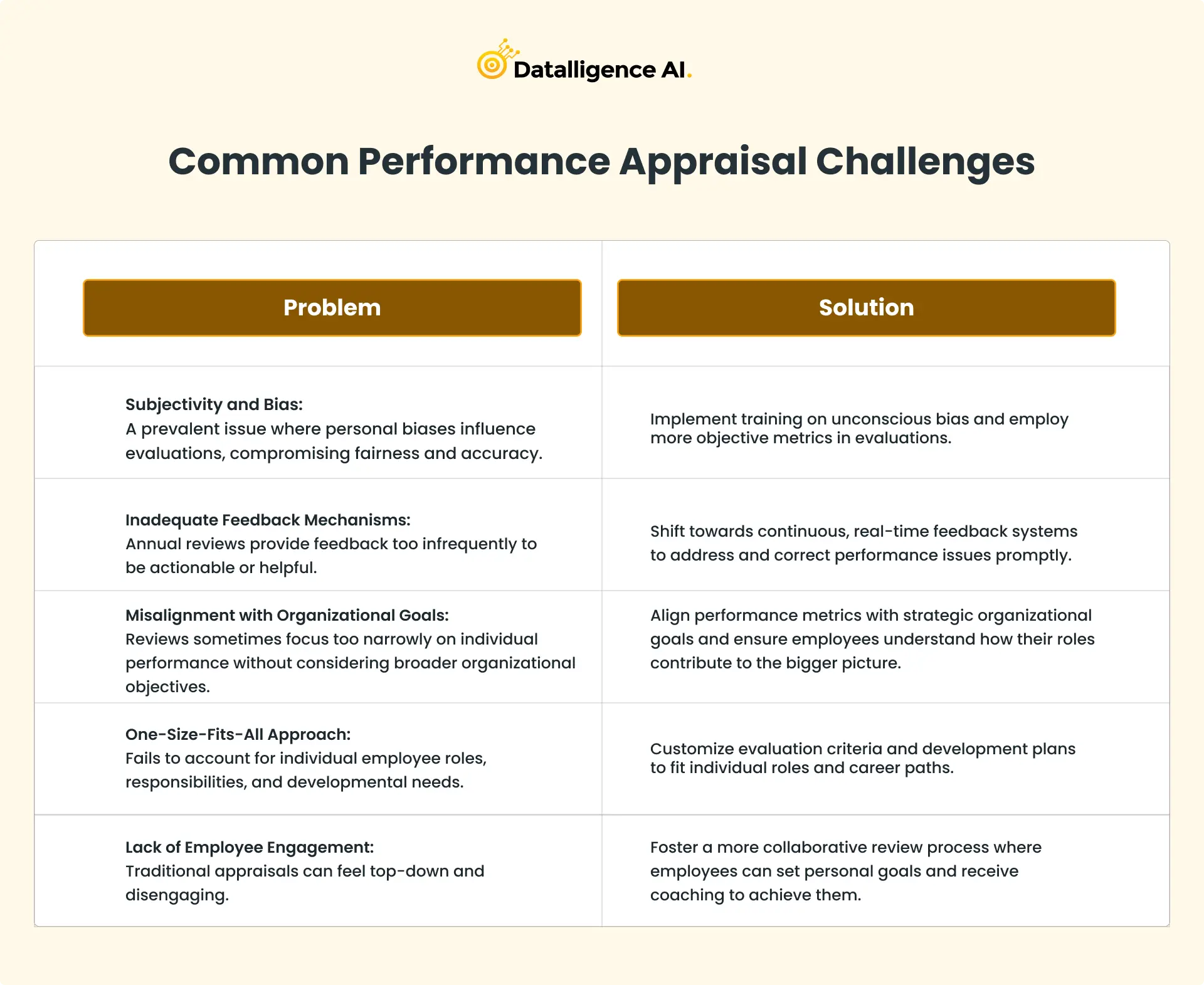
By addressing these common challenges, organizations can enhance the effectiveness of their performance appraisal systems, leading to improved employee morale, engagement, and overall organizational performance.
How to Turn Performance Appraisals into Development Opportunities
To effectively overcome performance appraisal challenges, organizations can adopt the following strategies, ensuring a dynamic, fair, and growth-focused appraisal process:
- Continuous Improvement and Collaboration:
- Continuous Feedback: Crucial for identifying areas of improvement and celebrating successes in real-time, fostering a culture of growth and development .
- Flexibility: Adapt to changing priorities through continuous collaboration between employees and managers, keeping the performance review process relevant and effective .
- Alignment and Communication:
- Goal Alignment: Linking individual employee goals with company objectives ensures everyone is working towards the same targets, enhancing overall organizational performance .
- Regular Check-ins: Scheduled discussions allow for the monitoring of progress, recognition of achievements, and adjustment of goals as necessary .
- Clear Communication: Establishing consistent channels for feedback and support ensures transparency and understanding across all levels of the organization .
- Resources, Support, and Fairness:
- Supportive Environment: Providing employees with the necessary resources and encouragement to achieve their goals, promoting a sense of empowerment and engagement .
- Balanced Incentives: Ensuring incentives are fair, transparent, and aligned with both quality and quantity of work, fostering motivation and satisfaction .
By implementing these strategies, organizations can navigate the common pitfalls associated with traditional performance appraisals, paving the way for a more responsive, engaging, and effective performance management system.
Investing in the Future: Building a Robust Career Development Framework
Traditional appraisal systems often fall short in addressing the qualitative aspects crucial for an employee’s career development, such as teamwork, communication, adaptability, and leadership . This inadequacy in providing meaningful guidance for professional growth and learning leaves employees without clear pathways for career advancement within the organization .
Moreover, the Peter Principle suggests that without proper developmental support, employees might be promoted to their level of incompetence, as seen in instances where a top-performing salesperson struggles with leadership or a developer finds project management challenging .
Strategies for Addressing Career Development:
Personalized Development Plans
Tailor coaching and support to fit individual employee needs, recognizing the importance of personal growth alongside organizational success .
Skill and Competency Assessments
Regularly evaluate employees’ skills and competencies to identify areas for development, ensuring they are equipped for their current roles and future promotions .
Employee Involvement
Involve employees in their appraisal process, allowing them to set personal goals and participate in identifying the support they need, thereby increasing engagement and motivation .
Exceptional leaders personalize their coaching efforts, understanding the nuances of individual growth and adjusting their actions to support each employee’s career ambitions . This approach not only leads to better performance but also builds a more dynamic and high-performing team
Overcoming the Challenges of Performance Reviews
Recognizing and addressing these challenges is critical for optimizing the effectiveness of performance reviews. Here are some performance appraisal problems and solutions that can be used to mitigate these issues:
1. Mitigating Subjectivity and Bias
To combat subjectivity and bias in evaluations, organizations can train managers to identify and mitigate their biases. Furthermore, a more objective and structured evaluation criteria can be developed to ensure fair assessments.
2. Customizing Evaluations to Individual Roles and Goals
Appraisals should be tailored to individual responsibilities and roles. This approach ensures a more accurate evaluation of an employee’s contribution and allows for more relevant feedback.
3. Providing Timely and Continuous Feedback
Instead of annual reviews, organizations can adopt a continuous feedback model. This approach encourages ongoing communication between managers and employees, promoting transparency and a better understanding of expectations.
4. Fostering a Positive Review Culture
To alleviate the stress and anxiety associated with performance reviews, organizations can foster a positive review culture where feedback is developmental rather than punitive.
5. Balancing Quantitative and Qualitative Metrics
An effective performance review system should balance quantitative metrics with qualitative aspects of performance. This approach ensures a comprehensive evaluation of an employee’s capabilities.
6. Focusing on Career Development
Performance reviews should not only assess past performance but also focus on an employee’s future development. Discussions about career goals, learning opportunities, and growth paths should be integral parts of the review process.
7. Aligning Performance Reviews with Organizational Goals
Performance appraisals should be aligned with the organization’s strategic goals. This alignment ensures that individual performance contributes to the overall success of the organization.
How Datalligence Can Help
Datalligence provides innovative solutions to overcome the challenges of performance reviews. Its performance management software and data analytics tools enhance the efficiency, fairness, and relevance of performance appraisal processes. By incorporating new methodologies like peer assessments, 360-degree feedback, and skill-based evaluations, Datalligence provides a more comprehensive and effective performance management system.
Wrapping Up
Performance reviews play a pivotal role in organizational management. However, the traditional methods used in these systems often grapple with significant challenges. By recognizing these challenges and implementing practical solutions, organizations can create a more effective, fair, and comprehensive performance management process that aligns with both individual and organizational goals. As we continue to navigate the complexities of the modern workplace, evolving beyond traditional performance appraisals becomes not only a necessity but a strategic imperative for fostering employee growth, engagement, and ultimately, organizational success.


